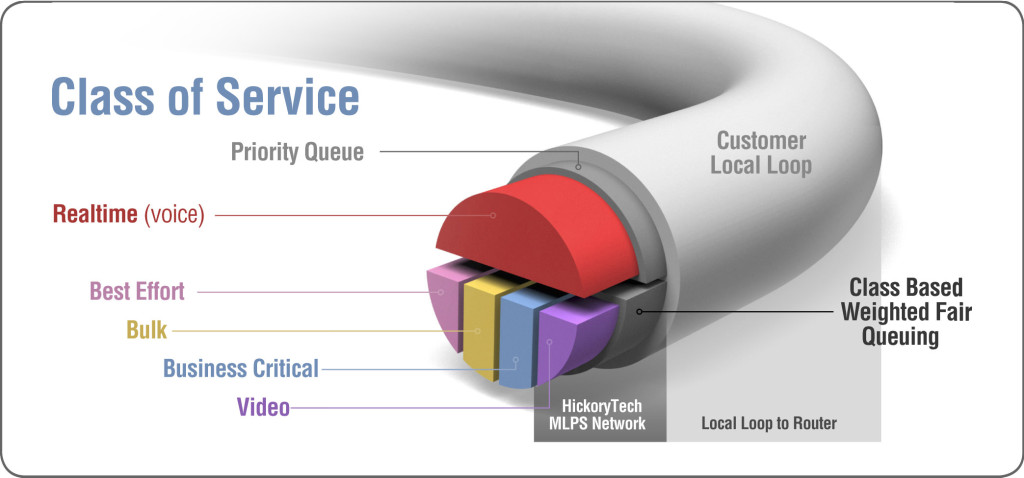CCNA Routing and Switching
<< IP and Network Fundamentals Course
>> Models, Protocols, and Standards Section
- Understanding TCP/IP and OSI Models
- Understanding Packet Flow Across the Network Part1
- Understanding Packet Flow Across the Network Part2
- Understanding Ethernet LAN Standards
- Understanding Ethernet MAC Addresses
- Understanding WAN Technologies
- Understanding Data Link Layer Encapsulation
- Understanding EoMPLS WAN Technology
- Understanding IP Routing Process Concept
- Understanding Web Browser DNS Lookup
- Understanding ARP Broadcast Message
- Understanding TCP and UDP Protocols
- Understanding TCP and UDP Multiplexing
- Understanding Application Layer Services
- Understanding Quality of Service Concept

Understanding Quality of Service Concept help you visualize how QoS used to prioritize Network Applications. Prioritizing certain traffic for delivery using Quality of Service, and how would you do this using UDP ports instead of TCP, will be discussed in details. UDP is used to deliver Real-time Applications such VoIP and IPTV, but UDP not like TCP, it lacks features such Error Recovery which needed by some Services and Application, however, UDP can be perfect choice for services that don’t need error recovery such Voice and IPTV.
In fact, Voice and IPTV won’t work with Error Recovery Feature, and all they require is delivery of IP packet with best effort possible without the TCP’s features overhead. But, because UDP has no features to protect the IP packet from Frame Error detection and dropping, meaning, won’t retransmit the IP Packet like TCP Error Recovery feature does, therefore, any application that uses UDP is tolerant to packet lose due to factors that I will list later on in this article.
You probably asking yourself, are we stuck over here? If TCP can’t be used and UDP can’t protect the IP Packet, so how the heck Voice and IPTV work then? The Ans. is: QoS. Prioritizing Voice and IPTV Packets, help prevent Frame Dropping to some extent, so Packets can reach their destination safely. Pretty cool, huh?
Table of Contents
Quality of Service (QoS)
Is it acceptable to lose some packets on the way especially in Real-time application such IPTV and VoIP? Well, it is acceptable to certain level, if I’m watching IPTV and the screen flickered little bit due some lost packets, I’m fine with that, but If I’m on the phone with someone using VoIP, then it is NOT acceptable to lose any packet, otherwise, no one of us will understand something of the conversation.
So what is the solution? We know that we can’t use TCP, because TCP got big Header and lot of overhead to process, TCP error recovery won’t help either, because no one of us can wait on the phone till TCP re-transmit the packet again and start hearing the same conversation again and again, like echo.
QoS is the Solution
QoS, prioritize the service especially the one that provides VoIP at the router and switch level. Prioritizing VoIP is similar to VIP ticket, the router and the switch will process this packet before any packet in the bucket. It deals with the VoIP packet as if it’s a very fragile object.
QoS is affected by various factors, which can be divided into “Human” and “Technical” factors.
- Human Factors include: Stability of Service, delays, user information.
- Technical Factors include: Reliability, scalability, effectiveness, maintainability, and grade of service, etc…
So, many things can happen to packets in general as they travel from source to destination, resulting in the following problems as seen from the point of view of the sender and receiver:
a. Low Throughput (Bandwidth): Due to varying load from other users sharing the same network resources, the bit rate (the maximum throughput) that can be provided to a certain data stream may be too low for real-time multimedia services if all data streams get the same scheduling priority. (This’s crucial from the standpoint of VoIP Applications)
b. Dropped Packets (Lose): The routers might fail to deliver some packets if FCS at the router decided that some frames are corrupted, or if packets arrive at a router and its buffer is full. The receiving application may ask for this information to be re-transmitted (only if TCP is used), possibly causing sever delays in the overall transmission.
c. Errors: Sometimes packets are corrupted due to bit errors caused by noise and interference, especially in wireless communications and long copper wires. The receiver has to detect this, and just as if the packet was dropped, may ask for this information to be re-transmitted. (only if TCP is used)
d. Latency (delay): It might take a long time for each packet to reach its destination, because it gets held up in long queue, or takes a less direct route to avoid congestion. This is different from throughput (bandwidth), as the delay can build up over time, even if the throughput is almost normal or balanced. In some cases, excessive latency can render an application such as VoIP or IPTV.
e. Jitter: Packets from the source will reach the destination with different delays. A packet’s delay varies with its position in the queue of the routers along the path between source and destination and this position can vary unpredictably. This variation in delay is known as “Jitter” and can seriously affect the quality of streaming audio and/or video.

Note: QoS rules can be applied on TCP and UDP port types, meaning, all application can use QoS regardless of the port type. But remember, equality don’t work with QoS, otherwise, we are back to square one.
The image above clearly shows how VoIP got the biggest pie! Bandwidth tend to serve all applications equally, but this method will effect application such VoIP.
Which Service can use QoS?
A defined quality of service may be desired or required for certain types of network traffic, for example:
- Streaming Media: Internet Protocol Television (IPTV), Audio over Ethernet, and Audio Over IP.
- IP Telephony: also known by Voice over IP (VoIP) or when VoIP and Video combined as Video Conferencing.
- Storage Applications: iSCSI and Fiber Channel over Ethernet (FCoE).
- Safety-Critical Applications: Remote Surgery where availability can be hazardous.
The above type applications/services are considered “Inelastic”, meaning, they require a special care with certain minimum level of throughput (bandwidth) and a certain maximum latency to function.
By contrast, “Elastic” applications/services can take advantage of however much or little throughput (bandwidth) is available. Bulk file transfers that rely on TCP are generally “Elastic”.
Where QoS can be applied?
Conventional Routers and LAN Switches operate on a best effort basis, the throughput (bandwidth) available to all applications/services to use. These equipment are less expensive, less complex and faster; thus more popular than competing with more complex routers and switches that provide QoS mechanism.
With complex switches and routers, QoS are applied on VLAN bases. Consider a college campus that provides online courses, their student requirements could be: Video Streaming, VoIP, and Video conferencing for live classes.
At switches and routers levels, they will use separate VLANs for different QoS levels. One Vlan might be used for browsing their Web Server contents such texts and pictures (Low Priority), one for streaming video (higher priority), and one for Video Conferencing and VoIP (highest Priority).
Subject Related
By Wikipedia QoS | How to Geek QoS Guide | TCP/IP Guide QoS | Packet Pushers QoS | R&S ICND1 and ICND2 | Introduction To Network | QOS-Enabled Networks | Introduction to Networking | End-to-End QoS Network Design | Who is Running the Internet | Networking Self-Teaching Guide
CCNA Routing and Switching
<< IP and Network Fundamentals Course
>> Models, Protocols, and Standards Section
- Understanding TCP/IP and OSI Models
- Understanding Packet Flow Across the Network Part1
- Understanding Packet Flow Across the Network Part2
- Understanding Ethernet LAN Standards
- Understanding Ethernet MAC Addresses
- Understanding WAN Technologies
- Understanding Data Link Layer Encapsulation
- Understanding EoMPLS WAN Technology
- Understanding IP Routing Process Concept
- Understanding Web Browser DNS Lookup
- Understanding ARP Broadcast Message
- Understanding TCP and UDP Protocols
- Understanding TCP and UDP Multiplexing
- Understanding Application Layer Services
- Understanding Quality of Service Concept

Well I definitely liked studying it. This subject procured by you is very practical for proper planning.